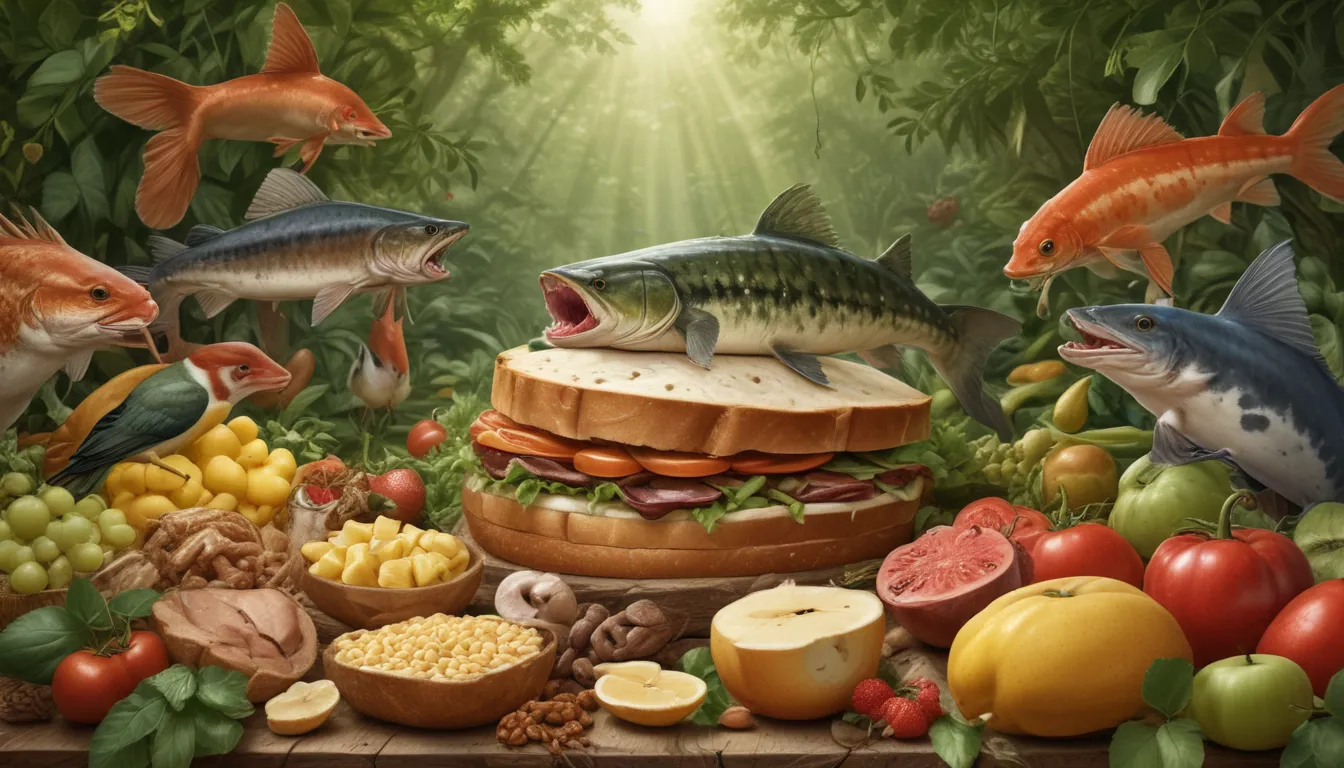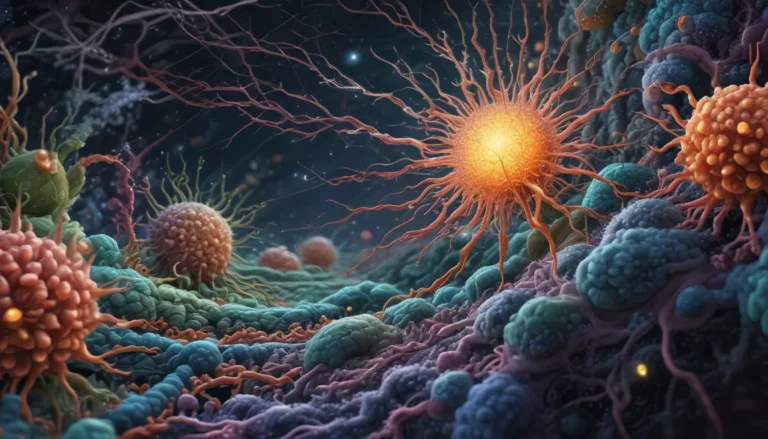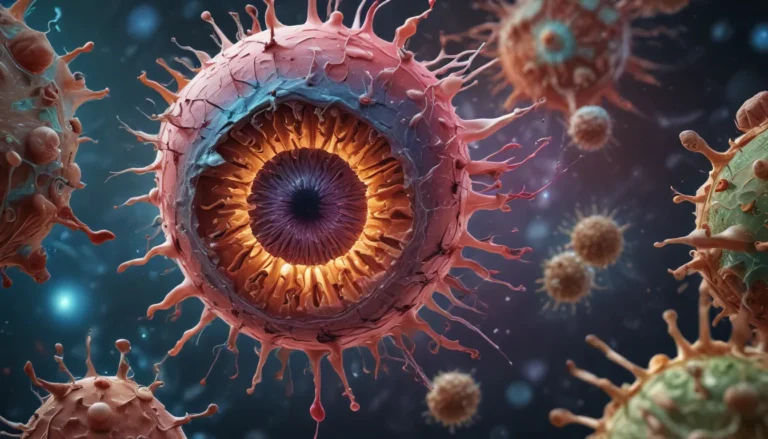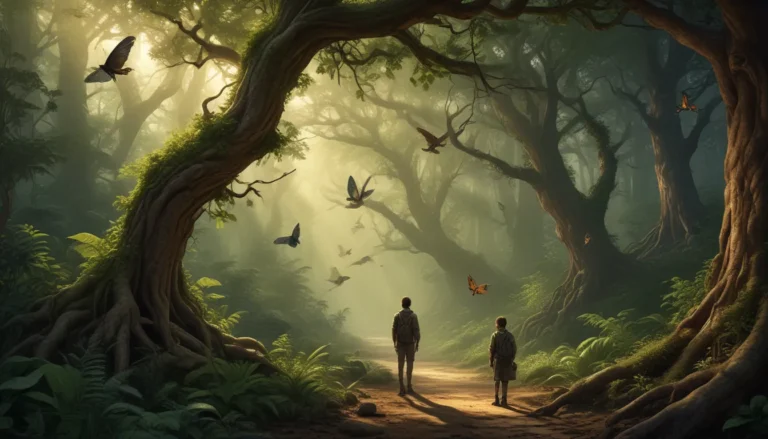A Note About Images: The images used in our articles are for illustration purposes only and may not exactly match the content. They are meant to engage readers, but the text should be relied upon for accurate information.
Do you ever stop to ponder the intricate interconnectedness of nature’s food chains? These fundamental systems not only sustain ecosystems but also influence our daily lives in remarkable ways. From the complex relationships between organisms to the transfer of energy, food chains offer a captivating glimpse into the delicate balance of the natural world.
Join us on a thrilling exploration as we unveil 11 surprising facts about food chains that will leave you in awe. Delve into the captivating realm of nature’s interdependence and discover how organisms rely on one another for survival. Let’s unravel the mysteries of food chains and gain a deeper appreciation for the intricate web of life.
The Intricate Tapestry of Food Chains
The food chain is a complex and fascinating web of interactions where organisms are interconnected through their consumption of one another. From primary producers like plants and algae to herbivores, carnivores, and decomposers, every organism plays a crucial role in sustaining this intricate web of life.
The Interdependency of Each Level
In the intricate dance of the food chain, each level is dependent on the one below it for energy. Primary producers such as plants and algae harness sunlight through photosynthesis to create organic matter, which then serves as the energy source for herbivores.
Humans: The Apex Predators on Land
As humans, we hold the prestigious position of being at the top of the terrestrial food chain. This means that we consume organisms from various trophic levels below us, including plants, herbivores, and smaller carnivores.
The Complexity of Food Webs
In some ecosystems, food chains branch out to form intricate food webs with multiple interconnected paths. This complexity provides a diverse and stable ecosystem where organisms can rely on alternative food sources if one becomes scarce.
Diversity in Chain Lengths
Food chains can vary in length depending on the complexity of the ecosystem. Some chains may comprise only a few levels, while others can be extensive, involving several trophic levels.
Energy Dynamics in the Chain
As energy moves up the food chain, it undergoes a decrease in efficiency. This decrease is due to energy loss through metabolic processes and waste production, resulting in less available energy as it ascends the trophic levels.
The Role of Predators in Regulation
Predators play a vital role in maintaining the balance within food chains. By regulating the population sizes of prey species, predators help prevent overpopulation and preserve the overall health and stability of the ecosystem.
The Ripple Effect of Species Extinction
The extinction of a species can have profound repercussions on the food chain. When a species disappears, it can disrupt the delicate balance, potentially leading to the extinction of other dependent species in a chain reaction.
Human Impact on Food Chains
Human activities such as deforestation, pollution, and overfishing can disrupt food chains and disturb the balance of ecosystems. These disruptions can result in loss of biodiversity and degradation of habitats.
Climate Change’s Influence on Chain Dynamics
Climate change can significantly alter food chain dynamics. The shifting climate patterns, rising temperatures, and melting ice caps can disrupt resource availability, affecting species distribution and abundance within the food chain.
Conservation through Understanding
Understanding food chains is pivotal for conservation efforts. By unraveling the intricate relationships between organisms, scientists and conservationists can develop effective strategies to protect ecosystems and preserve biodiversity.
Conclusion
In conclusion, exploring the intricacies of food chains not only fascinates but also underscores the importance of biodiversity and habitat preservation. Recognizing how organisms depend on one another for survival emphasizes the significance of maintaining ecosystems. With this deeper understanding of food chain dynamics, we can make informed choices to safeguard our environment and ensure diverse species’ continuity.
FAQs
- What is a food chain?
-
A food chain is a linear sequence of organisms where each organism serves as prey for the next in the chain, representing the flow of energy and nutrients within an ecosystem.
-
How do food chains begin?
-
Food chains typically commence with primary producers like plants or algae, which convert sunlight into energy through photosynthesis. The energy then transfers to herbivores and continues up the trophic levels.
-
Are all food chains alike?
-
No, food chains vary based on the ecosystem and the organisms involved. Some chains are concise with few trophic levels, while others are intricate and involve multiple interconnected species.
-
Can organisms participate in multiple food chains?
-
Yes, an organism can be part of multiple food chains concurrently. For instance, a bird may feed on insects and seeds, contributing to different food chains simultaneously.
-
How do disruptions in food chains impact ecosystems?
-
Disruptions in food chains can have significant ecosystem impacts. Removing a top predator, for example, can lead to imbalances in prey populations, triggering a cascade effect throughout the entire ecosystem.
-
Are humans integrated into food chains?
-
Yes, humans are part of food chains as omnivores occupying various trophic levels. However, human actions like overhunting or habitat destruction can disturb natural food chain dynamics.
-
Do food chains exist in aquatic ecosystems?
-
Absolutely! Food chains are present in both terrestrial and aquatic ecosystems, with aquatic systems often having complex food webs due to the interconnections among organisms like fish, algae, and plankton.
-
How do food chains contribute to biodiversity?
-
Food chains play a critical role in sustaining biodiversity by maintaining the balance of ecosystems through the interactions of organisms. The loss of a single species can disrupt the chain and impact biodiversity.
-
Can humans intervene in food chains?
-
Humans can intervene in food chains through conservation efforts like protecting endangered species and restoring habitats. Sustainable fishing and farming practices also aid in maintaining food chain balance.
-
Can climate change affect food chains?
- Yes, climate change can significantly impact food chains. Alterations in temperature, weather patterns, and ocean conditions can modify species abundance and distribution, disrupting ecosystem balance.
-
How can we learn more about food chains?
- More insights into food chains can be gained through scientific research, ecological studies, and exploring diverse ecosystems. Nature documentaries and educational resources also offer valuable insights into food chain dynamics.
Curious minds are always seeking more knowledge, especially about the enthralling world of food chains. If you’re interested in diving deeper into the topic, why not explore fascinating facts about these intricate ecological relationships? Curious about how popular fast-food joints fit into this puzzle? Indulge in nutrition facts from Shake Shack and Wendy’s to satisfy your thirst for knowledge and discover the connections between food and our lives.
Your Feedback Matters
Your exploration of the fascinating world of food chains is important to us. Our dedication to providing trustworthy and engaging content drives us to deliver valuable insights. Each fact contributed by users like you undergoes meticulous review by our editors for accuracy and reliability. Rest assured that the facts shared with you are not only captivating but also credible. Trust in our commitment to quality and authenticity as you embark on a journey of discovery and learning with us.






